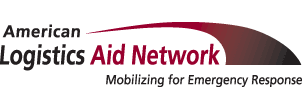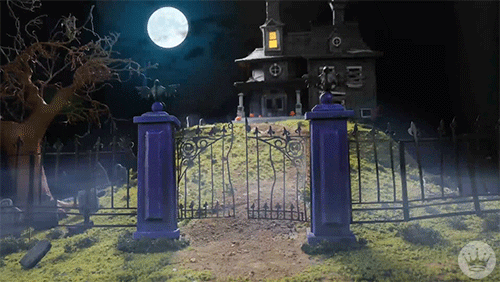It’s almost Halloween, and if your town is anything like mine, your neighbors’ yards are already littered with ghosts, witches and tombstones.
Clearly some of us enjoy giving other people a scare. Just as clearly, some of us enjoy getting a scare.
I’m not one of them. I hate haunted houses. I avoid scary movies like the plague. And I once jumped on top of several eight-year-old members of the Girl Scout troop that I was leading in order to escape a haunted hayride’s zombie.
However that doesn’t mean I’m not capable of (wo)manning up and facing my fears, especially if it’s for a good cause, which is why ALAN’s Executive Director, Kathy Fulton and I recently put our heads together to create this short list of some of the scariest perceptions that people have about disasters and disaster relief.
Scary Perception Number One: “A Disaster Will Never Happen To Me.”
When people live in certain areas (i.e. far away from a hurricane-prone coast or earthquake fault lines) it’s easy for them to assume that they’re protected from many types of catastrophes – and to become dangerously casual about making disaster preparations or heeding safety warnings.
Frankly, this attitude scares the heck out of us, because if the last few years have taught us anything, it’s that disasters can take a wide variety of forms and strike at almost any time. And the people who fail to plan – or to take shelter/evacuate as requested – are much more likely to find themselves in harm’s way.
Scary Perception Number Two: “It’s Okay. The Government’s Got It Covered.”
There are so many things wrong with this second perception that it’s not even funny. For one thing, not every disaster survivor qualifies for FEMA government assistance. For another, some survivors aren’t eligible for as much government assistance as others. Plus it can take some time for FEMA to process all of the requests for assistance that it receives and to conduct all of the necessary inspections that need to be made before it can provide funds. And even then, these funds are limited.
It’s a similar story for disaster survivors who are fortunate enough to have homeowners’ or renters’ insurance.
That’s why the humanitarian response organizations that provide food, hydration, shelter and other supplies immediately after a disaster hits (and the non-profit organizations that help survivors fill in the short-term and long-term gaps that government assistance and insurance reimbursement don’t cover) are so essential. It’s also why the people who support them are an answer to prayer.
Scary Perception Three: “We’re Too Far Away To Be Of Help.”
One of the laments that we often hear from potential transportation, warehousing and material handling equipment donors is, “We’d have loved to help you with relief efforts for X community’s disaster. But we didn’t have any locations in the area.”
The sad thing is, we probably could have used their help– and so could many of the humanitarian organizations that we support.
When push comes to shove, these organizations can’t afford to split hairs about where their donated relief supplies come from, especially if those supplies extend or enable their relief efforts. They might even NEED those donations to come from another part of the country because many of their closer potential product donors may have already been tapped out.
In light of this, never underestimate the value of a long-distance contributed logistics offer. Relief supplies are often located much farther away from a disaster site than you might imagine. And the help that you’re offering might be just the ticket.
Scary Perception Four: “It’s Been A Few Months (Or Years). So Survivors Of That Particular Disaster Don’t Need Our Help Anymore.”
If individuals and communities recovered from disasters as quickly as their particular disasters stopped making headlines, life would be much easier for everyone. However as any disaster survivor can tell you, that’s rarely the case.
Disaster recovery is a super-long process that’s usually measured in months or years rather than days or weeks. And many of its costliest and most work-intensive stages like clean-up and rebuilding don’t start until long after the news and camera crews have left.
So don’t ever think that there’s no way you can help a community just because the disaster that affected it happened quite a while ago. Chances are, that’s when your compassion and assistance will be needed the most.
Scary Perception Five: “Helping With Disaster Relief Won’t Pay The Bills. As A Result, There’s Nothing To Be Gained From Our Business Making A Financial Or In-Kind Donation.”
While it may not initially seem like you have anything financial to gain from helping a community in need, nothing could be further from the truth, especially if that community is home to some of your employees, customers, suppliers or business operations.
The people who live in these communities can (and do) remember who showed up for them when times were tough – and so do many other members of the purchasing public. In fact, according to a recent article in the MIT/Sloane Management Review, multiple studies have shown that corporate donations ultimately attract customers. And according to another recent article in the Harvard Business Review, consumers tend to favor companies that donate a larger share of their profits.
Is this why so many of our country’s most successful organizations are also some of the most philanthropic? Possibly. However, if that’s the case, it’s okay by us, because when generous businesses do what they can to help a community get back on its feet more quickly, everybody wins.
Fear Not
There’s far more I could add to this story. But time and Halloween-candy buying obligations don’t allow me to discuss them all. Besides, I want to end this story on a caring rather than a scaring note.
So I’ll leave you with this: Even though disasters seem to happen with frightening regularity, I’ve actually become a far braver person since joining the ALAN family several years ago. It’s taught me that when horrible things like hurricanes, tornadoes and pandemics happen, a lot of wonderful people show up to help – and reminded me that when things are at their most harrowing, there are always extraordinary people like you ready to come to the rescue.
Just don’t ask me to go on a spooky hayride anytime soon.
Lori Lockman
Director Of Communications

